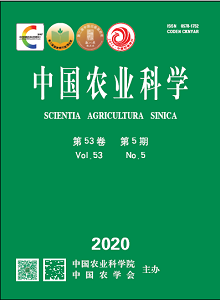【Objective】The objective of this study is to research soil bacterial community structure of cotton verticillium wilt resistant and susceptible varieties at flowering and boll stage, understand the relationship between soil bacterial community structure and soil physicochemical properties, and to provide a theoretical basis for monitoring of cotton verticillium wilt and green ecological control. 【Method】The susceptible (EJ) and resistant (J863) varieties were used in field plot experiments. The ITS gene copy number of Verticillium dahliae and soil bacterial community structure at different flowering and boll stages (flowering, late flowering, and boll-forming stages) were studied by real-time fluorescence quantitative PCR (real-time PCR) and high throughput sequencing (Illumina MiSeq), respectively. The redundancy analysis (RDA) was used to determine the correlation between bacterial community structure and soil physicochemical properties. 【Result】There were different degrees of relevance between the occurrence of verticillium wilt and the ITS gene copy number of V. dahliae in soil. The incidence and disease index of susceptible variety EJ were positively correlated with the ITS gene copy number of V. dahliae, while those of resistant variety J863 were not significantly correlated with the ITS gene copy number of V. dahliae. The ITS gene copy number of V. dahliae in soil of resistant variety J863 was lower than that of susceptible variety EJ at late flowering and boll-forming stages. The high throughput sequencing analysis showed that the bacterial richness indices (Chao1 and ACE) of resistant variety J863 were higher than those of susceptible variety EJ at flowering and boll-forming stages. The principal component analysis showed that there were differences in soil bacterial community structure between resistant and susceptible varieties and at different flowering and boll stages. At phylum level, the average relative abundance of some dominant bacteria in susceptible variety EJ was lower than that of resistant variety J863, such as Actinobacteria, Gemmatimonadetes, Chloroflexi, Bacteroidetes, Nitrospirae, Patescibacteria, and Armatimonadetes, which was decreased by 16.38%, 4.05%, 2.25%, 6.58%, 7.10%, 20.60%, and 35.78%, respectively. At genus level, the average relative abundance of some dominant bacteria of susceptible variety EJ was lower than that of resistant variety J863, including Sphingomonas, Gemmatimonas, Bryobacter, Iamia, Pseudarthrobacter, Blastococcus, Rubrobacter, Nocardioides, Pontibacter, Streptomyces, Gemmatirosa, Micromonospora, and Solirubrobacter, which was decreased by 5.09%, 19.41%, 13.79%, 2.36%, 10.78%, 34.47%, 46.76%, 61.84%, 52.75%, 48.61%, 74.79%, 9.13%, and 26.42%, respectively. The redundancy analysis (RDA) showed that the bacterial community structure was affected by nitrate nitrogen (NO3 --N), available phosphorus (AP), ammonium nitrogen (NH4 +-N), inorganic phosphorus (IP), pH and organic matter (OM). 【Conclusion】The correlation between the ITS gene copy number of V. dahliae in soil and the occurrence of cotton verticillium wilt of susceptible and resistant varieties is different, and the incidence of verticillium wilt in susceptible variety is positively correlated with the ITS gene copy number of V. dahliae in soil. The bacterial community structure of resistant variety is better than susceptible variety at flowering, late flowering, and boll-forming stages. There are some differences in the dominant bacterial community at different growth stages. The diversity, relative abundance and composition of bacteria in soil are affected by organic matter, pH, nitrogen type and available phosphorus. Meanwhile, the growth stage of cotton had a significant influence on the bacterial community structure in soil.









